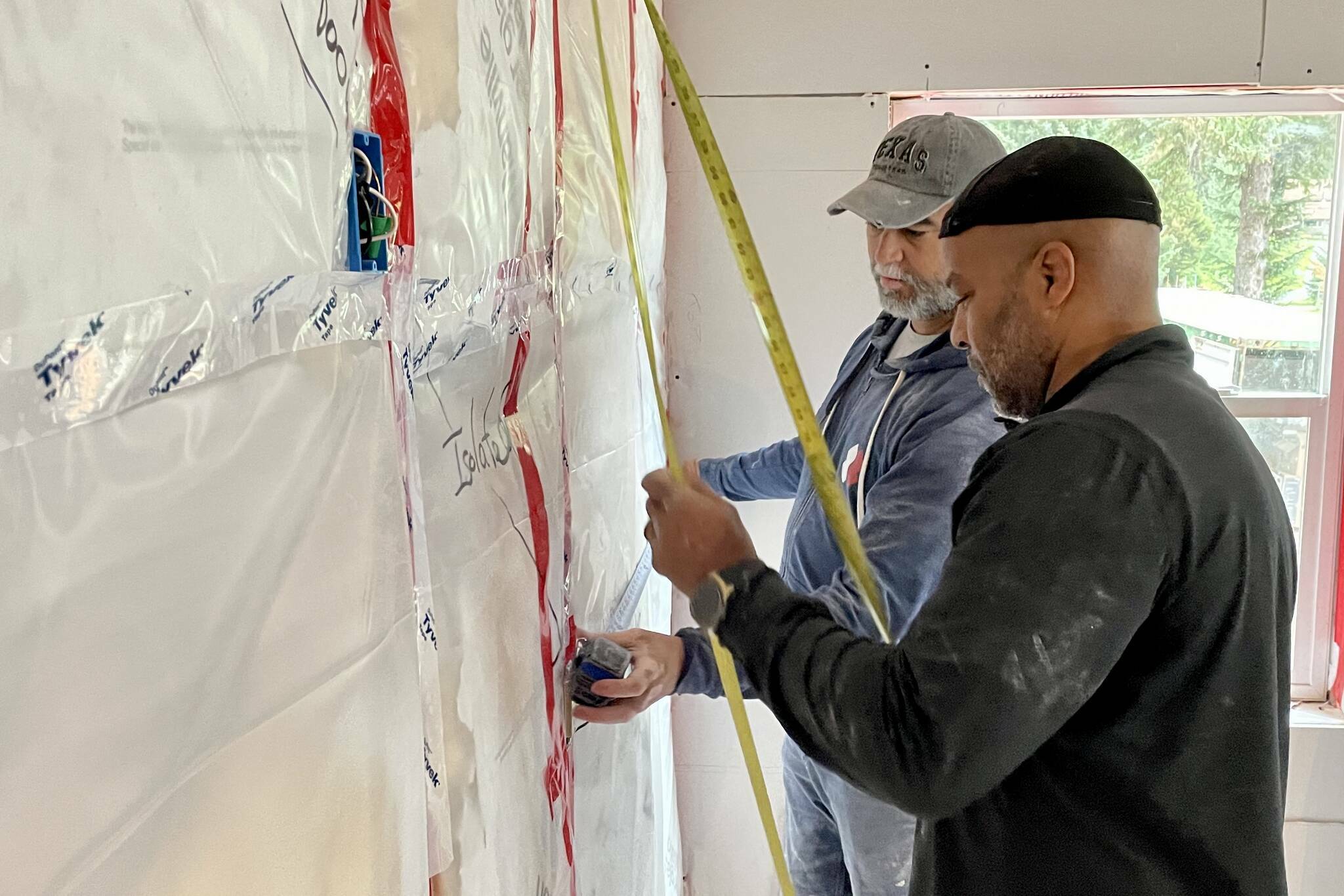Drywall and ceiling tile inspectors in Alaska make more than $31 an hour, but are nearly as unhappy with their jobs as fast food cooks making half as much. Meanwhile, architects seem to be quite a bit happier with their jobs than anyone else.
At a time when job openings are near all-time highs statewide and nationally, a look at wages and turnover by occupation reveals some key elements to what makes workers happy and unhappy, according to a report by the Alaska Department of Labor and Workforce Development.
The report tracked 79 specific jobs for calendar 2022 ranging from bicycle repairers to oil derrick operators to speech-language pathologists. It also highlights — literally — job satisfaction indicators that are surprising.
Dangerous and/or physically demanding work tends to have high turnover rates, according to the report — but there are notable exceptions.
“Explosives workers have one of the lowest turnover rates in the table, suggesting some people are especially interested in that job and those who take it, knowing full well what’s involved, are more likely to stick with it even though the wages aren’t high,” the study notes.
The report is the first of its kind in Alaska, and something the federal government and many states can’t track easily, said Dan Robinson, chief of the department’s Research and Analysis Section, who wrote the report for this month’s issue of the department’s Alaska Economic Trends magazine.
“Alaska is interesting that way because the data don’t really exist to do that with federal data,” he said. “The source for the data is unemployment insurance, records that employers have to file every quarter. But Alaska is one of very few states that actually collect occupations as part of that. Most states just say what industry the person works in and then their wages.”
The physical difficulty of drywall and ceiling jobs appears to be a primary factor in the high turnover rate of 82% annually — second highest behind fast food cooks at 84% — which is common in some other labor-intensive occupations despite relatively high pay, according to the study. A 100% turnover rate would mean an employer has to replace all of its workers in a specific profession every year.
“Drywall and ceiling tile installers handle and move materials, climb, lift, balance, and stoop,” the report notes. “Similar physical requirements characterize the jobs of highway maintenance workers; radio, cellular, and tower equipment installers and repairers; and carpenters. When the work is outside, as it is for several of those occupations, it can mean harsh weather on top of the physically demanding tasks, especially in Alaska.”
The jobs with the highest turnover (and their average hourly wages) were fast food cooks at 84% ($15.75/hr.); drywall and ceiling tile installers at 82% ($31.04/hr.); landscaping and groundskeeping at 71% ($21.04/hr.); highway maintenance at 67% ($27.94/hr.); and laborers/freight/stock/movers at 66% ($22.14/hr.)
“It seems there’s something satisfying about designing buildings,” the report notes.
At the other end of the spectrum were architects (except landscape and naval) at 8% ($48.93/hr.); architectural and civil drafters at 9% ($35.48/hr.); civil engineers at 12% ($52.39 an hour); pharmacists at 12% ($70.39/hr.); and loan officers at 14% ($36.43).
The report affirms that money isn’t everything — but it’s also not nothing — with other key factors in job satisfaction including a sense of craft or an ability to create. Both of those, according to the report, are among the occupations with a lower-than-expected turnover rate of 41% despite making an average of $13.67 an hour.
“Annual turnover for bartenders was less than half that of fast-food cooks despite the low average hourly wages. Tips are one likely reason,” the report notes. But additionally “bartending is particularly appealing to some, judging by the data. In addition to the social aspect, bartenders often seek special mixology training and many view their work as a craft.”
Robinson said the bottom line is “a lot of what makes a place desirable or not is specific to the employer.”
“A lot of it is the culture of the place, that those things are a little bit hard to define: ‘I like my co-workers,’ ‘I liked the level of supervision,’ ‘I feel like the work is meaningful,’” he said.
Alaska’s job openings of just below 9% in 2022 were above the national average of just below 7%. That gap of about 2% has been fairly consistent for the past two decades, although the percentage of openings in 2020 of just below 6% statewide and above 4% are closer to the historic pattern for that time period.
• Contact Mark Sabbatini at mark.sabbatini@juneauempire.com or (907) 957-2306.

